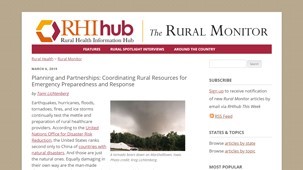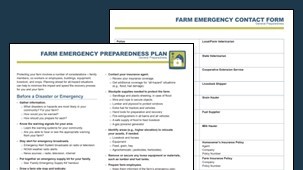
Rural Disaster Behavioral Health Tools and ResourcesRural communities face unique challenges in disasters. Rural individuals and families live farther apart and may not have access to public transportation, so they may have a harder time accessing post-disaster assistance, including mental health and substance use services. These disparities exist even in non-disaster times. According to a recent analysis, about twice as many non-metropolitan as metropolitan counties lacked a psychiatrist, psychologist, or psychiatric nurse practitioner. The following resources provide guidance on rural emergency planning and preparedness, highlight strengths and challenges of rural areas, and relate stories from the field.
| ||||
Subscribe to The DialogueThe Dialogue is a quarterly e-newsletter that provides practical and down-to-earth information for disaster behavioral health coordinators, local service providers, federal agencies, and nongovernmental organizations. You can subscribe to the newsletter or contact the SAMHSA DTAC by email at dtac@samhsa.hhs.gov to contribute an article to an upcoming issue. Questions About the SAMHSA DTAC Bulletin?The SAMHSA DTAC Bulletin is a monthly newsletter used to share updates in the field, post upcoming activities, and highlight new resources. For more information, please contact: The views, opinions, and content expressed in this publication do not necessarily reflect the views, opinions, or policies of the Center for Mental Health Services (CMHS), the Substance Abuse and Mental Health Services Administration (SAMHSA), or the U.S. Department of Health and Human Services (HHS). |

























.png)









No hay comentarios:
Publicar un comentario